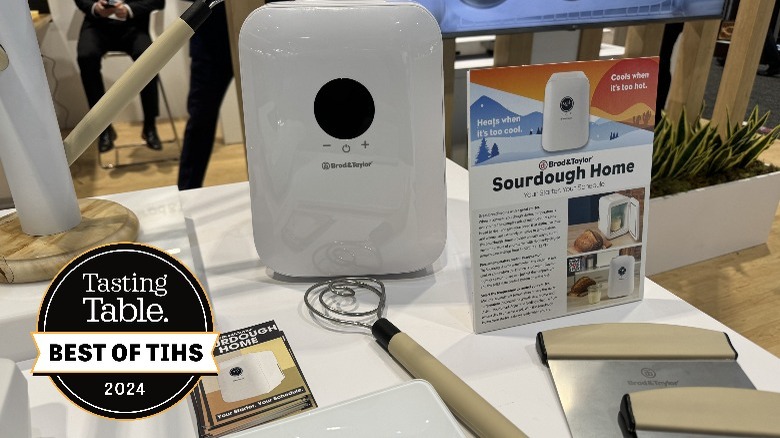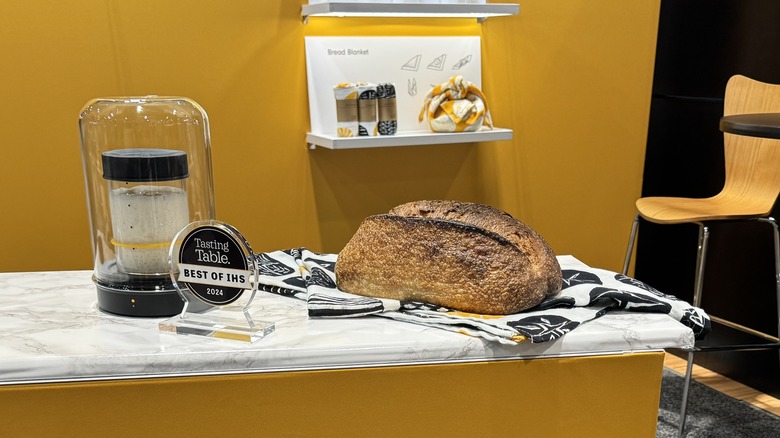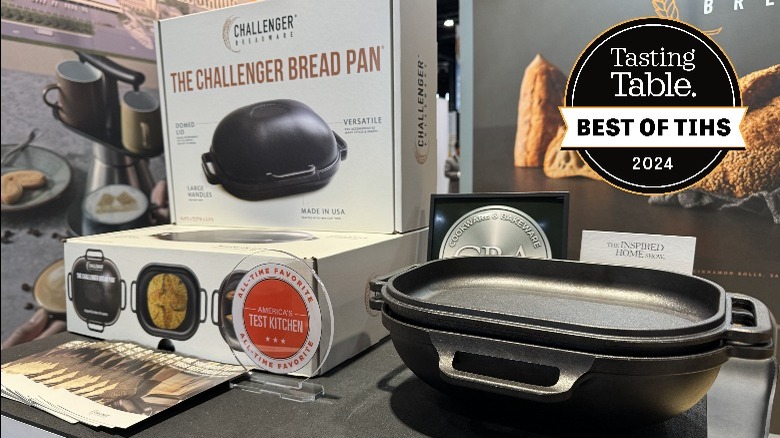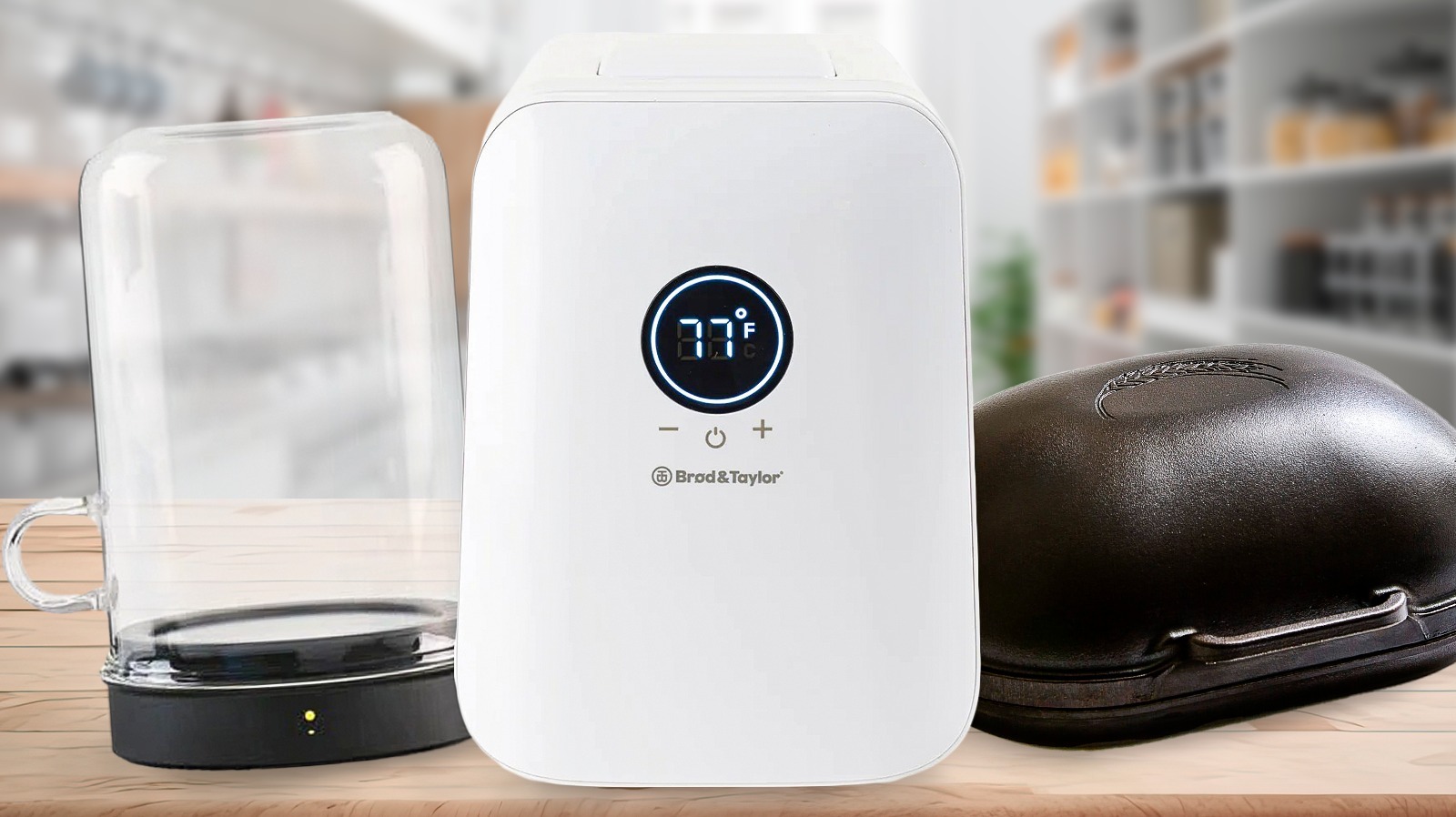Who says that making sourdough bread has to be a difficult process? After attending The Inspired Home Show (TIHS) this weekend, and viewing an array of sourdough-related products, Look created a list of some of the ones you need in your kitchen.
While sourdough might have a reputation as being finicky to bake, these items will streamline the process from the starter to the final baking phase. Sourdough is a great recipe to master; it takes longer to go stale than other loaves and there are many ways to customize the flavors and structure. Also who can say “no” to the temptation of being able to have a warm, fresh loaf of bread available whenever they please? Whether you’ve been on the bread trend since the COVID-19 quarantine or simply looking to start a new hobby, there’s nothing wrong with investing in some quality tools to make the best loaf.
The Sourdough Home from Brod & Taylor

Creating a sourdough starter can be a tedious project. If you don’t monitor your environment’s temperature, you can quickly end up with an unsalvageable starter. The Sourdough Home from Brod & Taylor puts your starter into an intuitively controlled environment that keeps it at an even temperature. All you have to remember to do is feed your starter on its schedule and relax. This product resembles a miniature refrigerator and holds one starter at a time. Once you get more comfortable with your baking skills, you can experiment with changing the device’s temperature to see how it impacts the flavor, texture, and smell of the bread.
The product is the result of what President Michael Taylor calls “a crazy brainstorm on a hot afternoon” when he watched his own starter run riot and bubble over. Since its debut, customers embraced the idea of a home for their starters, which many choose to name and treat, as the president describes, “like pets.” Less frequent bakers will appreciate the lower temperature settings on the device since they slow fermentation without the harsh chill of the fridge. “I couldn’t imagine not having one,” Taylor said. “It takes the stress out of baking.”
Goldie by Sourhouse

In sourdough baking, there’s a term referred to as the “Goldilocks zone.” When your starter rests in a temperature range between 75 to 82 degrees Fahrenheit, it thrives and grows better. The Goldie by Sourhouse was inspired by this zone to create its starter container. The clear dome lid lets you watch your starter and see it as it grows over time. The jar rests on a cooling puck that can cool down if it senses the temperature is too hot. It features an easy-to-interpret three-zone thermometer that alerts you when your starter is ready to cook.
“It’s an alter and a celebration for your starter,” said co-founder Jennifer Olsen, whose background is in industrial design. “It’s important to see and interact with your starter, not lock it away in a cupboard — for both practical and emotional reasons.” The carefully designed jars are smooth-edged and shoulder-free to make scraping out the mixture easy. The team also offers a set of blue, yellow, and red bands to allow for a quick and clear gauge of your starter’s growth, ideally making users even more in touch with the ingredient and, ultimately, better bakers.
“I wanted to make a dumb device, not a smart device,” added co-founder Erik Fabian, who says a traditional mug warmer, another tech option, will add a blast of heat but could kill your yeast in the process. “Sourdough is kind of intimidating, and we wanted to take away all those risks.”
The Challenger Bread Pan

Another common struggle in sourdough baking is transferring your proofed and scored loaf into its proper baking dish. Dutch Ovens are used to bake loaves since they retain and distribute heat so well, but these dishes have high walls that make it hard to place your loaf in. The Challenger Bread Pan seeks to offer a more accessible bread pan for different types of bread, including sourdough. Crafted for bakers by bakers, this cast iron dish has a few features that make it ideal for baking. The walls of the pan are shallow, and it has a sealable lid to generate steam to keep your bread fluffy and moist.
Since its debut in 2019, the makers improved the design to ensure the top handles are placed just right to easily flip the shell onto its back (as pictured above) for the second half of baking and browning. It’s also 10% lighter, shedding 2 pounds, to lighten the load for bakers. For Tim Gallion, senior director of operations, the cast iron is a perfect fit for his mom’s honey wheat loaf, and the flat base is well-suited for yeasted sweet and savory rolls. However, he and other users have found some non-carbohydrate uses for the pan, too. “If anything, most people don’t push it hard enough,” Gallion said. “It’s not just for bread. I use the base on my grill, and some people even flip the top to make stir fry.”







